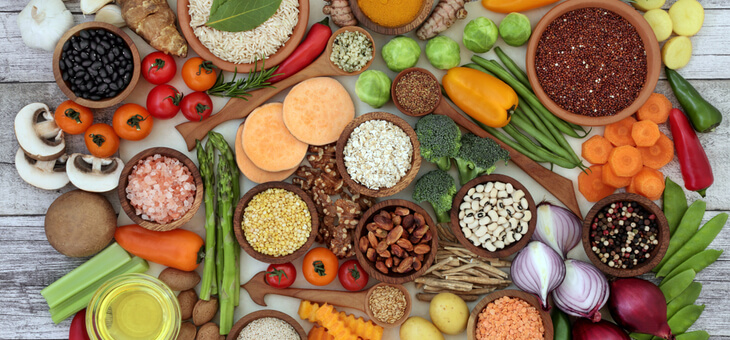Flavonoids are a diverse group of phytonutrients (plant chemicals) found naturally in many fruits, vegetables and herbs. Along with carotenoids, they are responsible for the vivid colours in fruits and vegetables.
The general rule is that the more colourful a food item is, the richer it will be in flavonoids. Oranges, however, are an exception to the rule because the flavonoids contained in this fruit are mainly found in the pith and the interior of the skin.
Flavonoids can also be found in other plant products such as dry beans, grains, red wine and green and black teas.
Read: Four phytonutrients that can boost your health
There are six different types of dietary flavonoids, and each kind is broken down by your body in a different way.
The best way to obtain all six types is to consume a variety of fruits and vegetables.
The types of flavonoids
Flavanols
These types of flavonoids are known for their antioxidant properties and are found in these foods:
- onions
- kale
- grapes and red wine
- tea
- peaches
- berries
- tomatoes
- lettuce
- scallions
- broccoli
Flavan-3-ols
Foods with these types of flavonoids are very rich in nutrients. They include:
- white tea
- green tea
- oolong tea
- black tea
- apples
- purple and red grapes
- blueberries
- strawberries
- cocoa and chocolate products
Flavones
Flavones are the pigments in blue and white flowering plants. They also work as a natural pesticide, protecting leaves from harmful insects.Flavones may also help with inflammation in the body. You can find them in:
- parsley
- red capsicum
- celery
- chamomile
- peppermint
Flavanones
Flavanones are known for their anti-inflammatory properties and are found in these foods:
- lemons
- limes
- oranges
- grapefruit
Isoflavones
Isoflavones may help keep hormones balanced in your body. Isoflavonoids are mainly in soy, soy products, and some other legumes such as fava beans.
Read: Fruit and vegie skins you really should eat
Anthocyanins
Anthocyanins are naturally produced pigments that give flowers their red, purple, and blue colour. They’re predominantly found in the outer skin of berries and berry products such as:
- red and purple grapes
- red wine
- cranberries
- blueberries
- strawberries
- blackberries
What do flavonoids do?
Flavonoids have beneficial anti-inflammatory effects; they protect your cells from oxidative damage that can lead to disease. In simple terms, they help your body function efficiently while protecting it against everyday toxins and stressors.
They are also powerful antioxidant agents. Antioxidants help your body fight off potentially harmful molecules in the body.
If these harmful molecules such as allergens, germs, toxins and other irritants are left to do what they please, they may trigger inflammation.
Even though inflammation is a natural immune response, the symptoms can be uncomfortable and painful.
Read: Four of the best superfoods to help reduce inflammation
Flavonoids may help your body dismiss or reduce that inflammatory reaction so that those symptoms are reduced.
Increasing the number of flavonoids in your diet is a great way to help your body stay healthy and potentially decrease your risk of some chronic health conditions. But a diet rich in plant foods benefits the body in many ways all around.
Health benefits of flavonoids
One 2015 study found increased consumption of flavonoid-rich foods may decrease rates of hypertension. Lowering blood pressure through increased dietary consumption of dietary antioxidants may decrease the rate of end-organ damage that is secondary to hypertension.
Another study of Australian women looked at the role of flavonoids in preventing death from all causes, including cancer and heart disease specifically. Researchers found that among women with the highest intake of flavonoids there were 62 per cent fewer deaths during the five-year study compared to those who consumed the least.
The women in this study consumed most (about 80 per cent) of their flavonoids from black tea, which contains flavanols. Flavanol intake – almost all from tea – was linked to a lower risk of death, but researchers could not find the same lower risk of death from anthocyanin or flavone intake.
One study published in the Journal of Translational Medicine found that people who consumed higher levels of flavonoids as part of their diet had a lower risk of experiencing a cardiovascular event.
However, more research is needed to prove the cardiovascular benefits of flavonoids.
A diet high in flavonoids may also decrease your risk of type 2 diabetes. Results of a meta-analysis done in 2018 suggest that a high intake of dietary flavonoids correlates with a lower risk of type 2 diabetes.
How many of these foods do you regularly eat? Do you try to consume a range of fruit and vegies every week? Share your thoughts in the comments section below.
If you enjoy our content, don’t keep it to yourself. Share our free eNews with your friends and encourage them to sign up.

